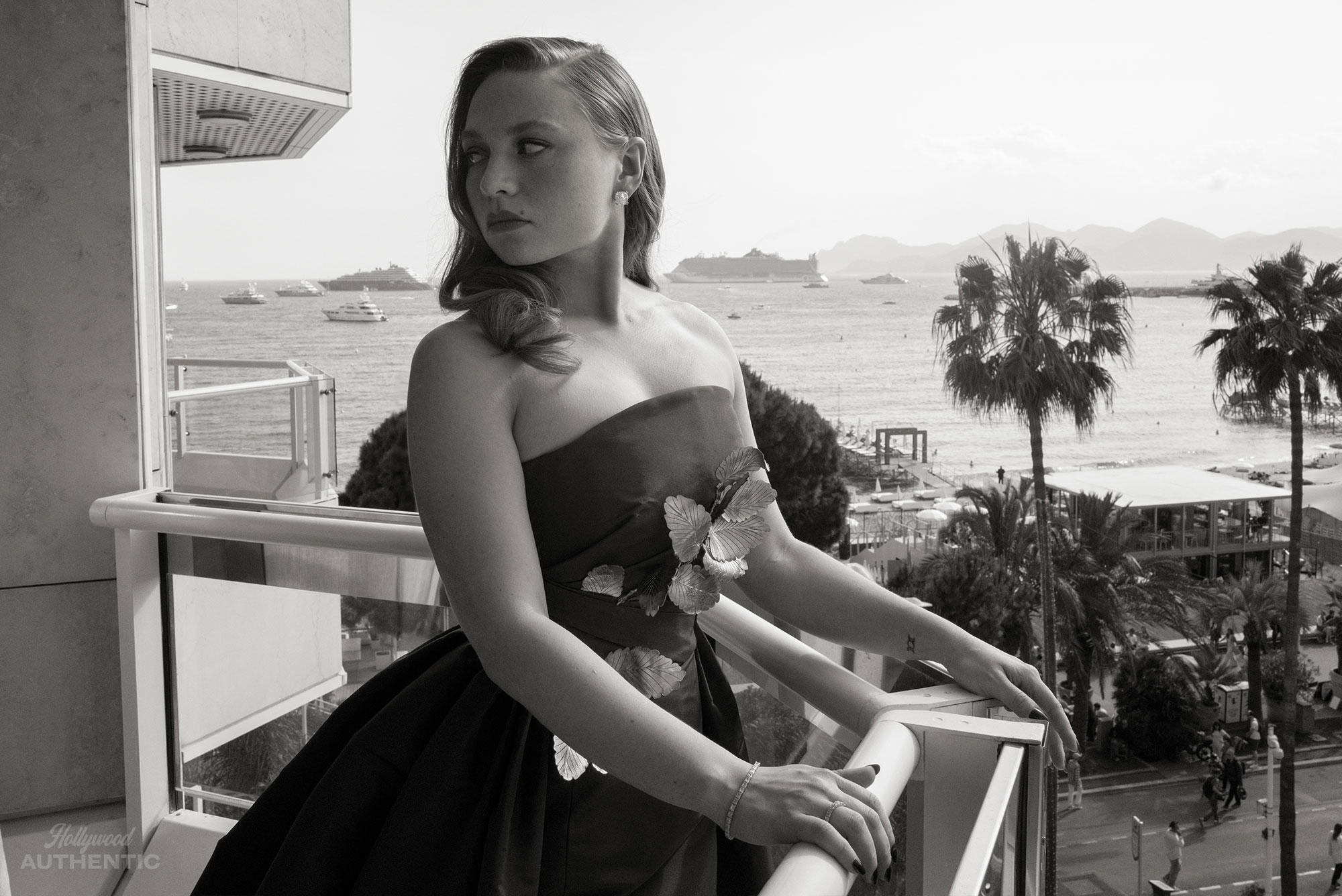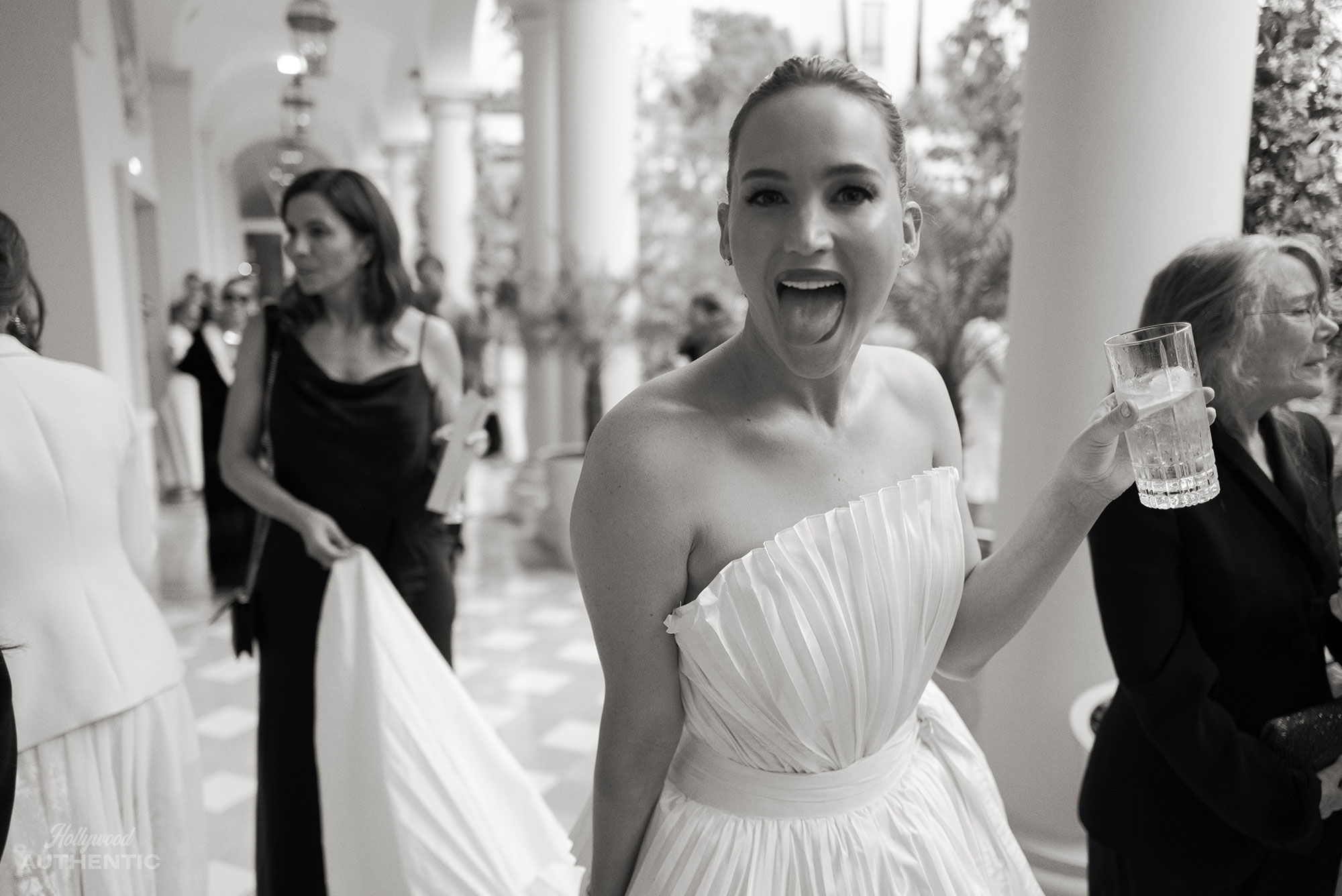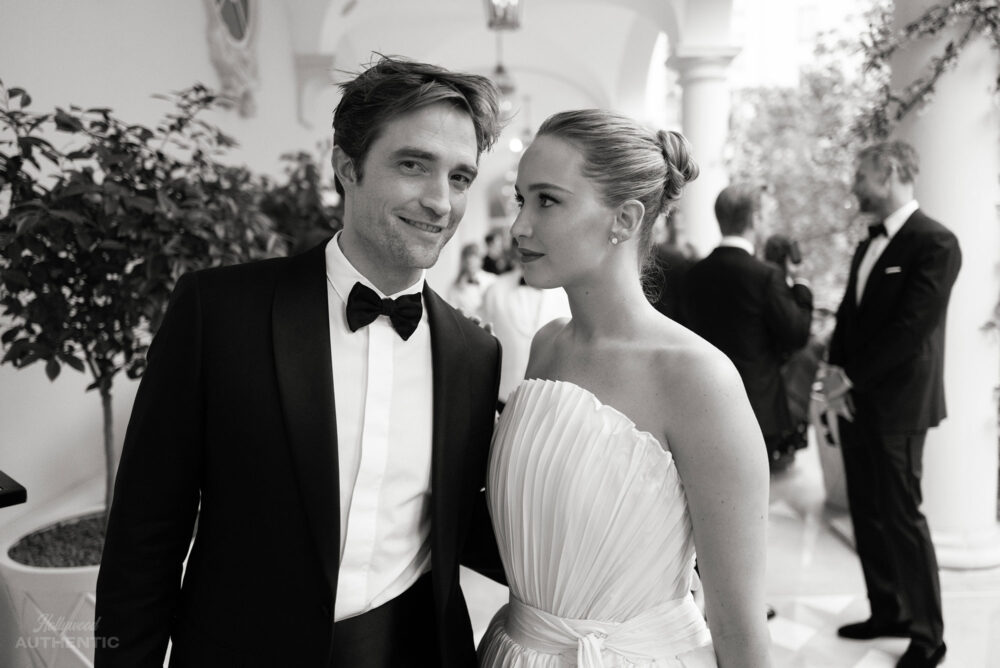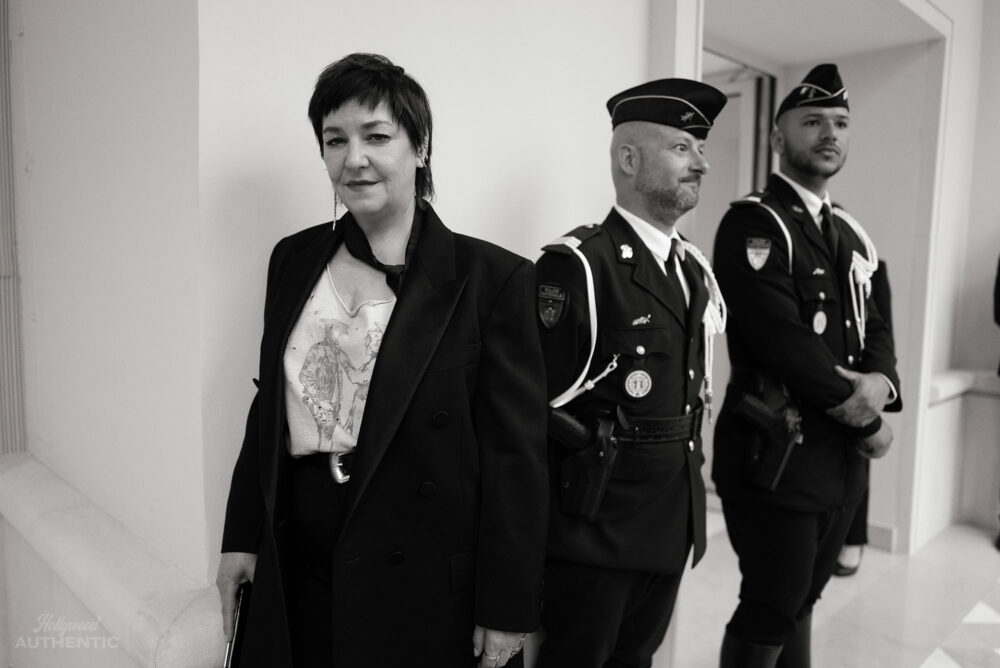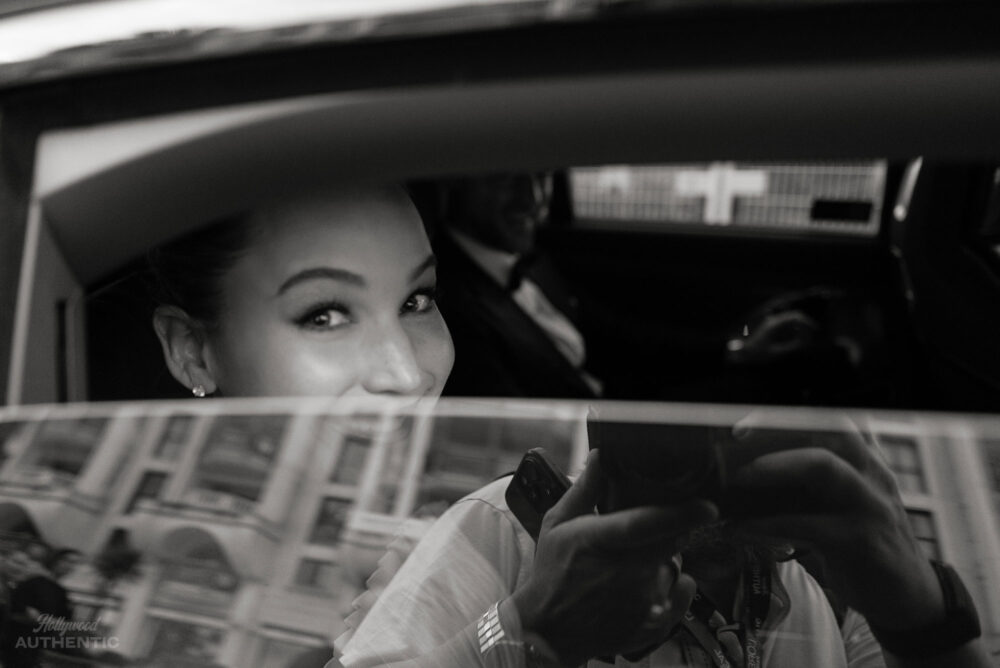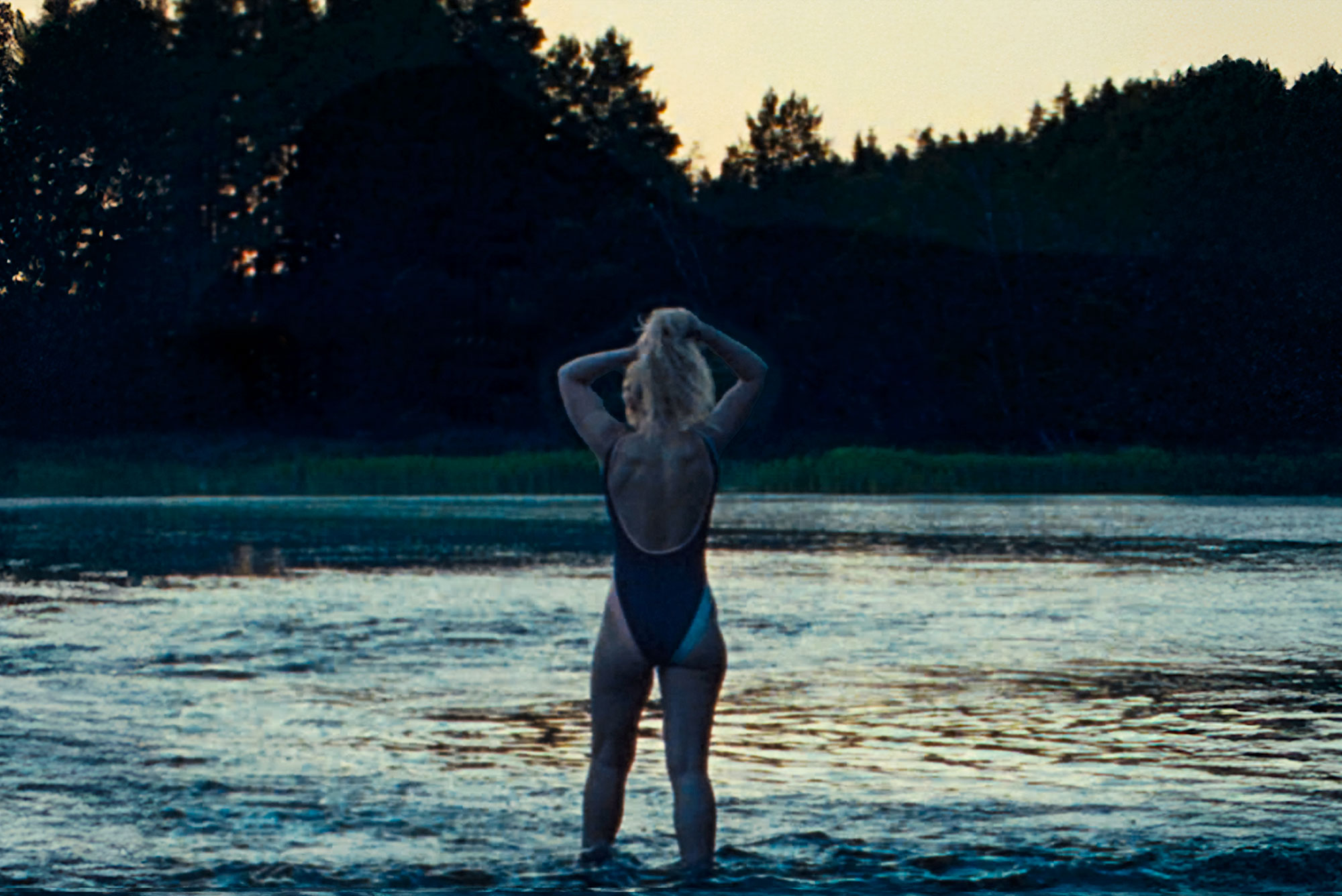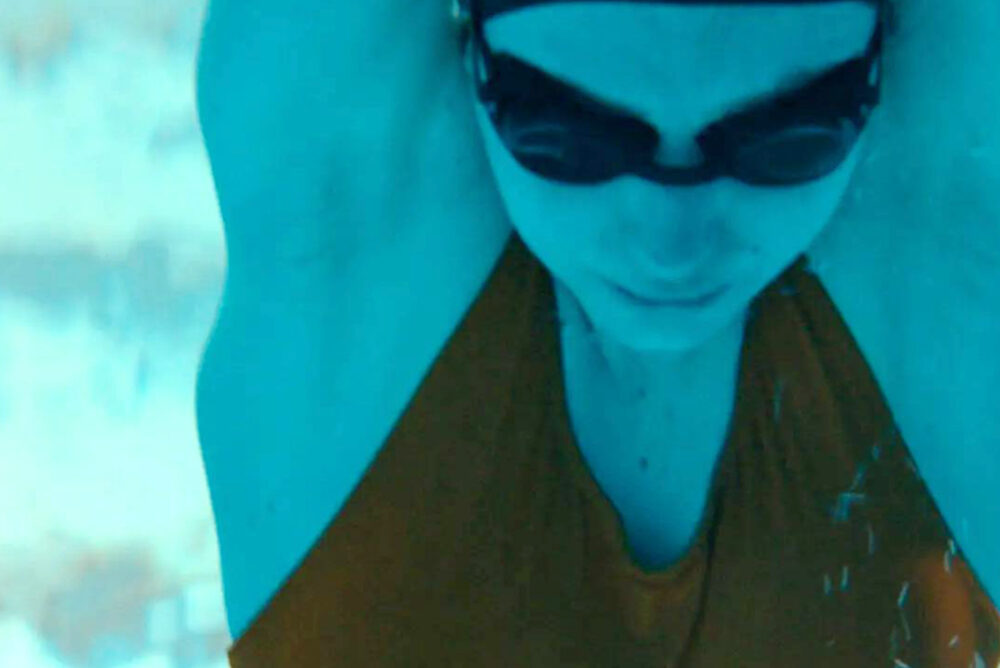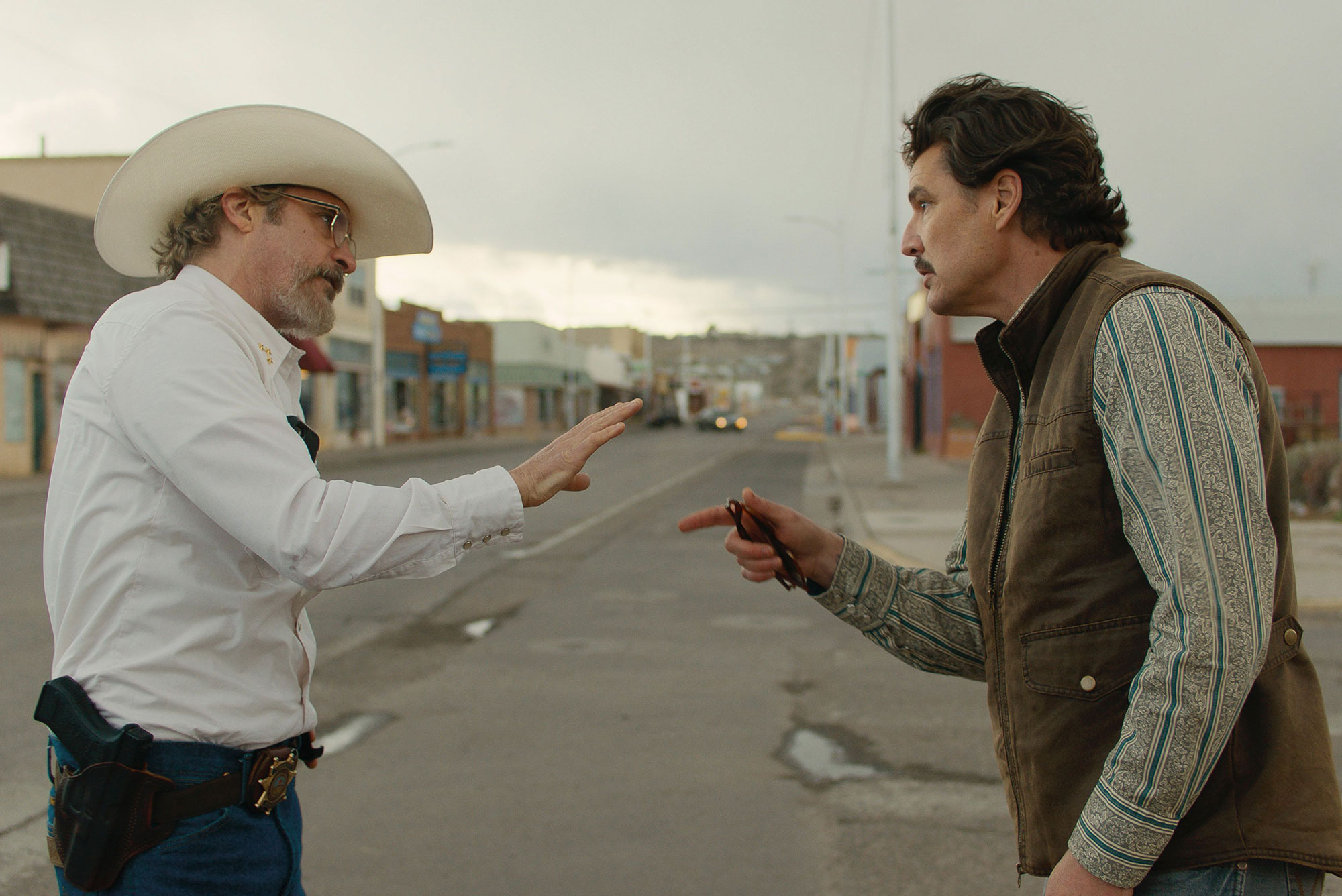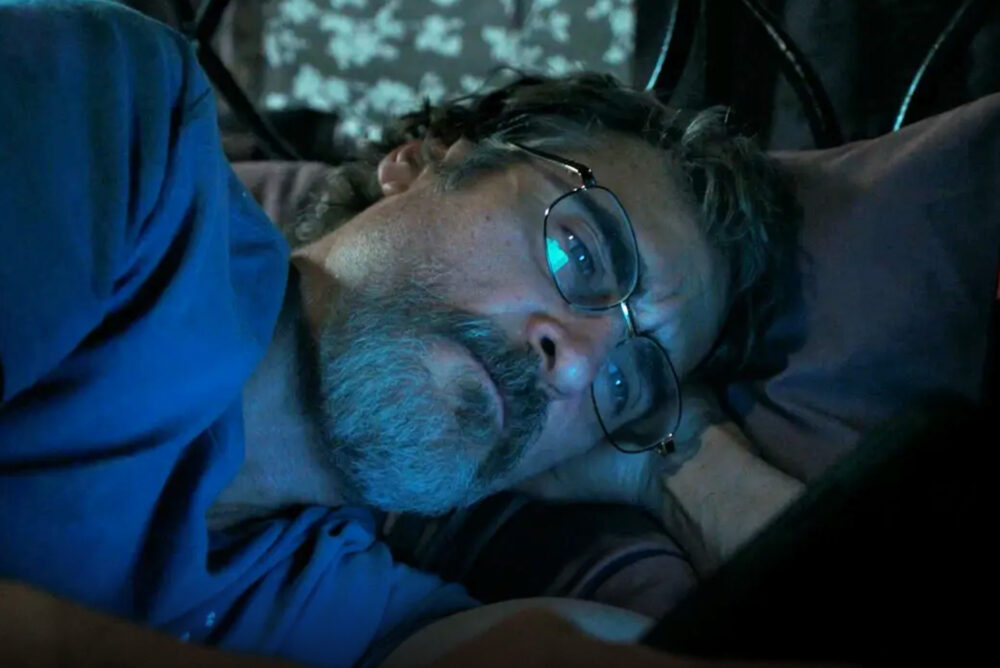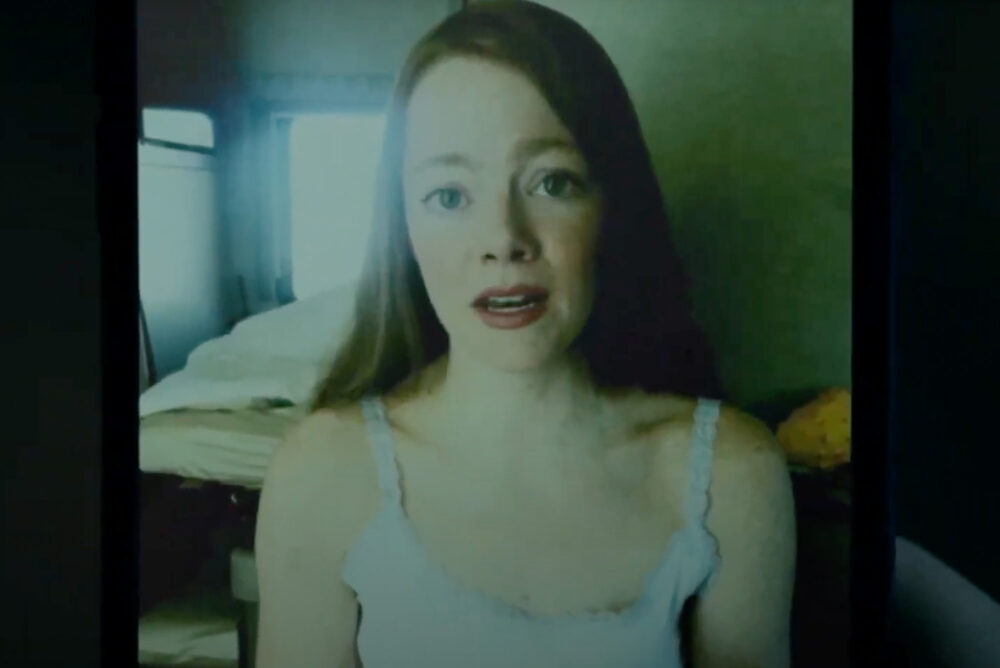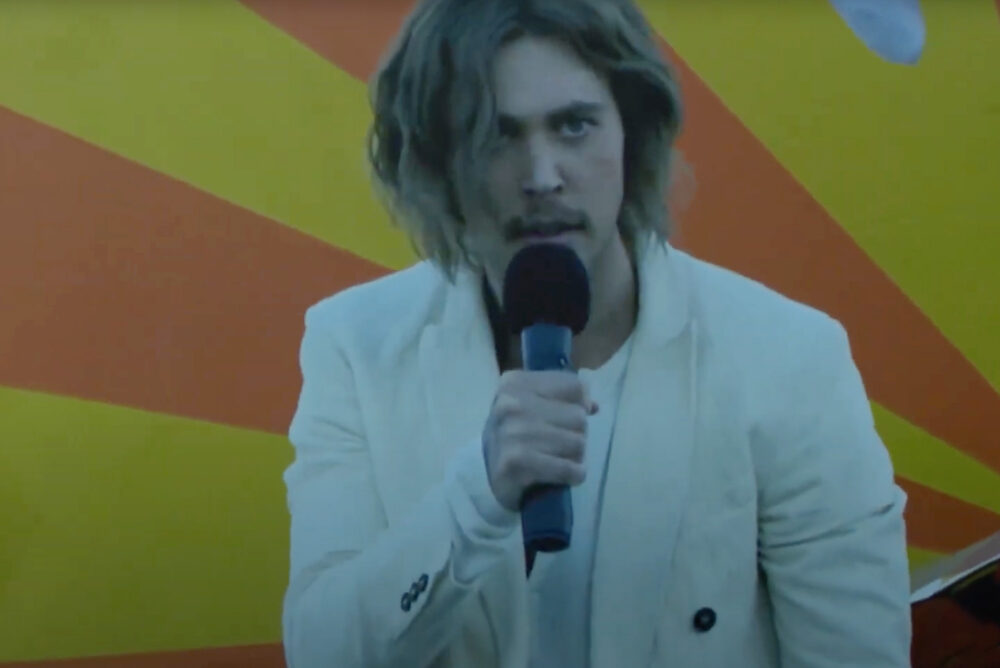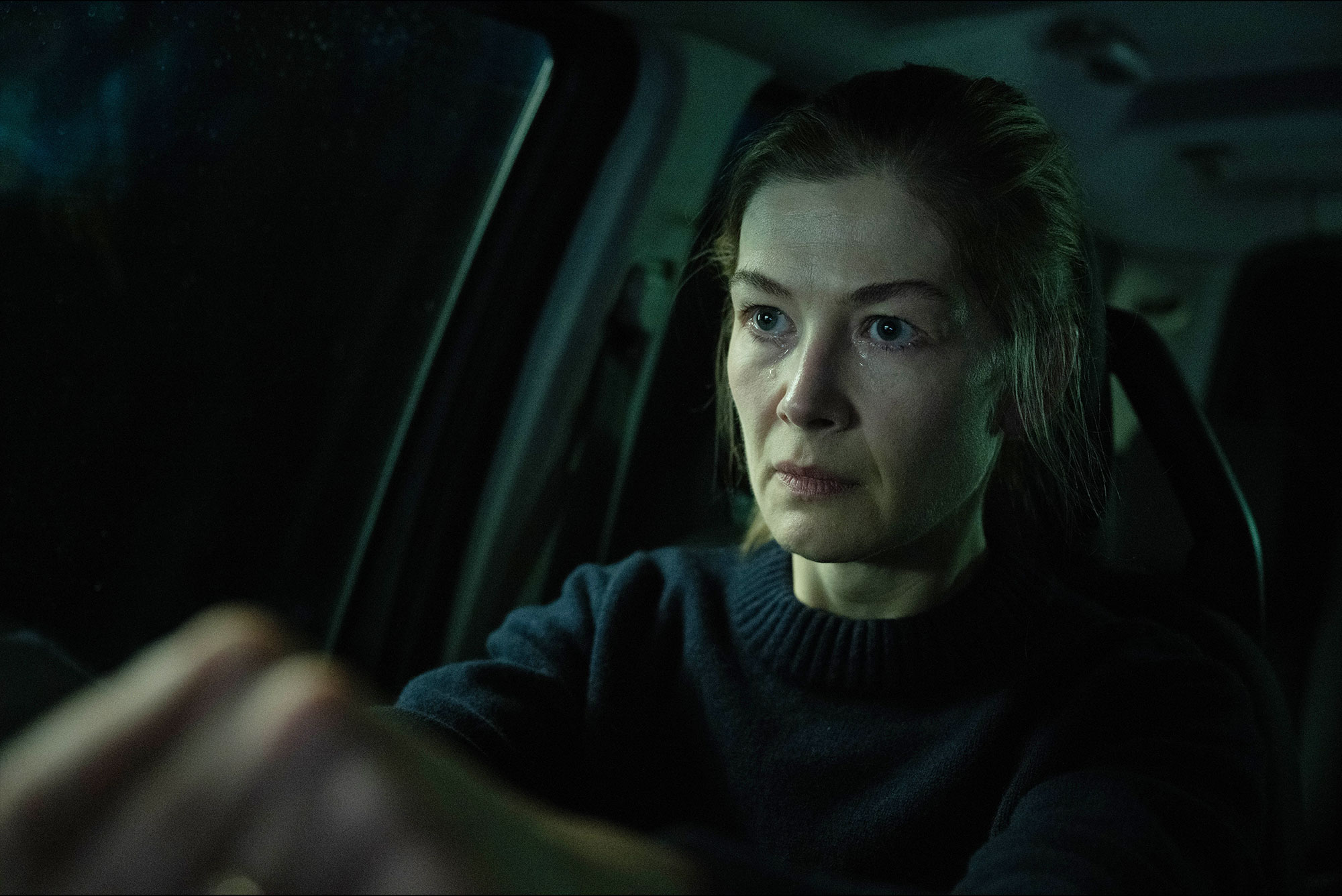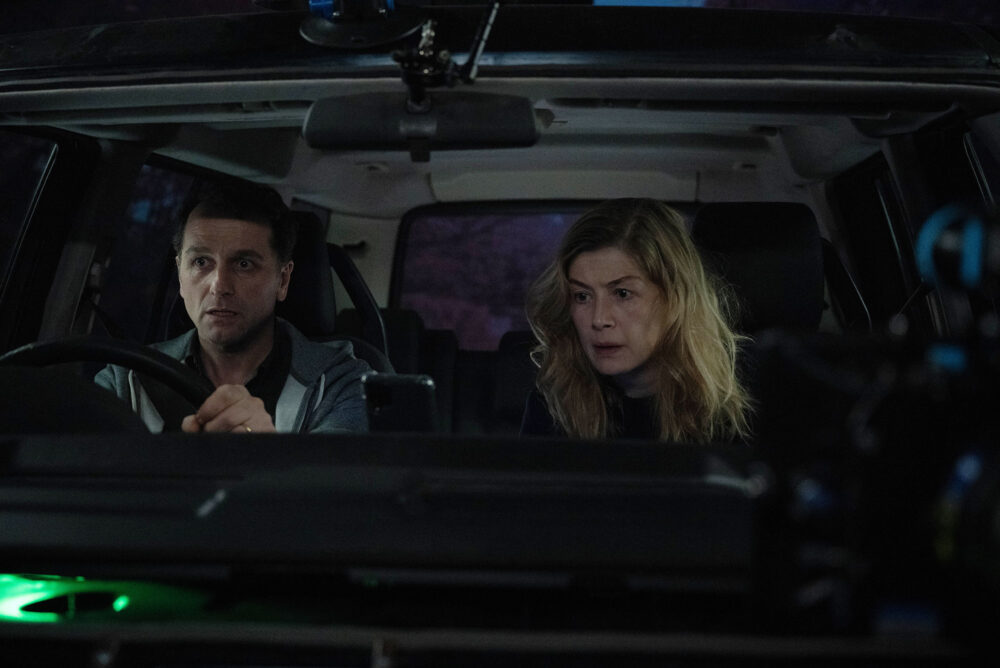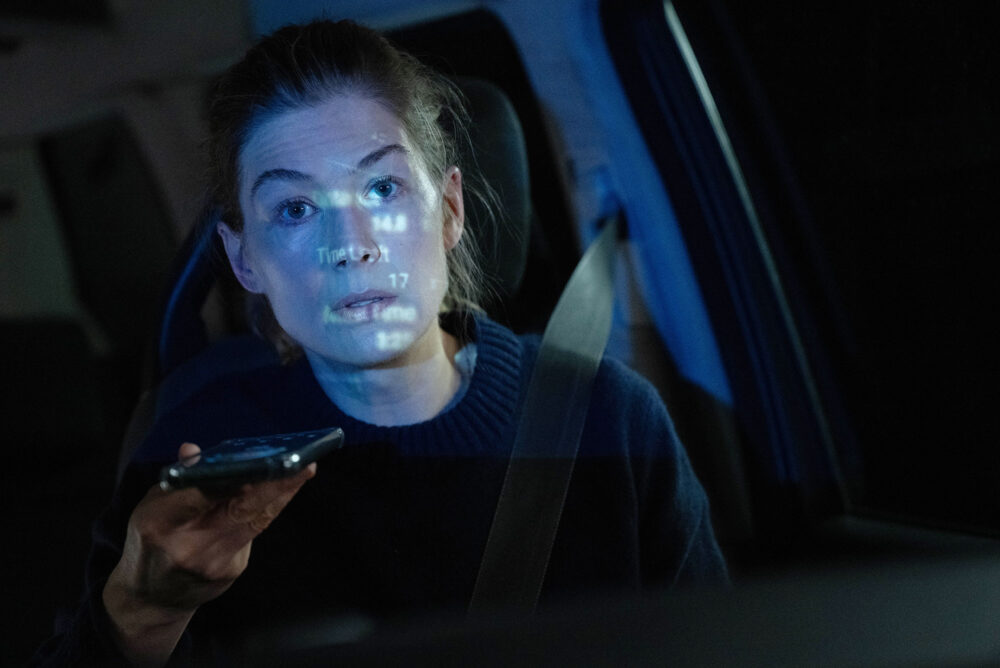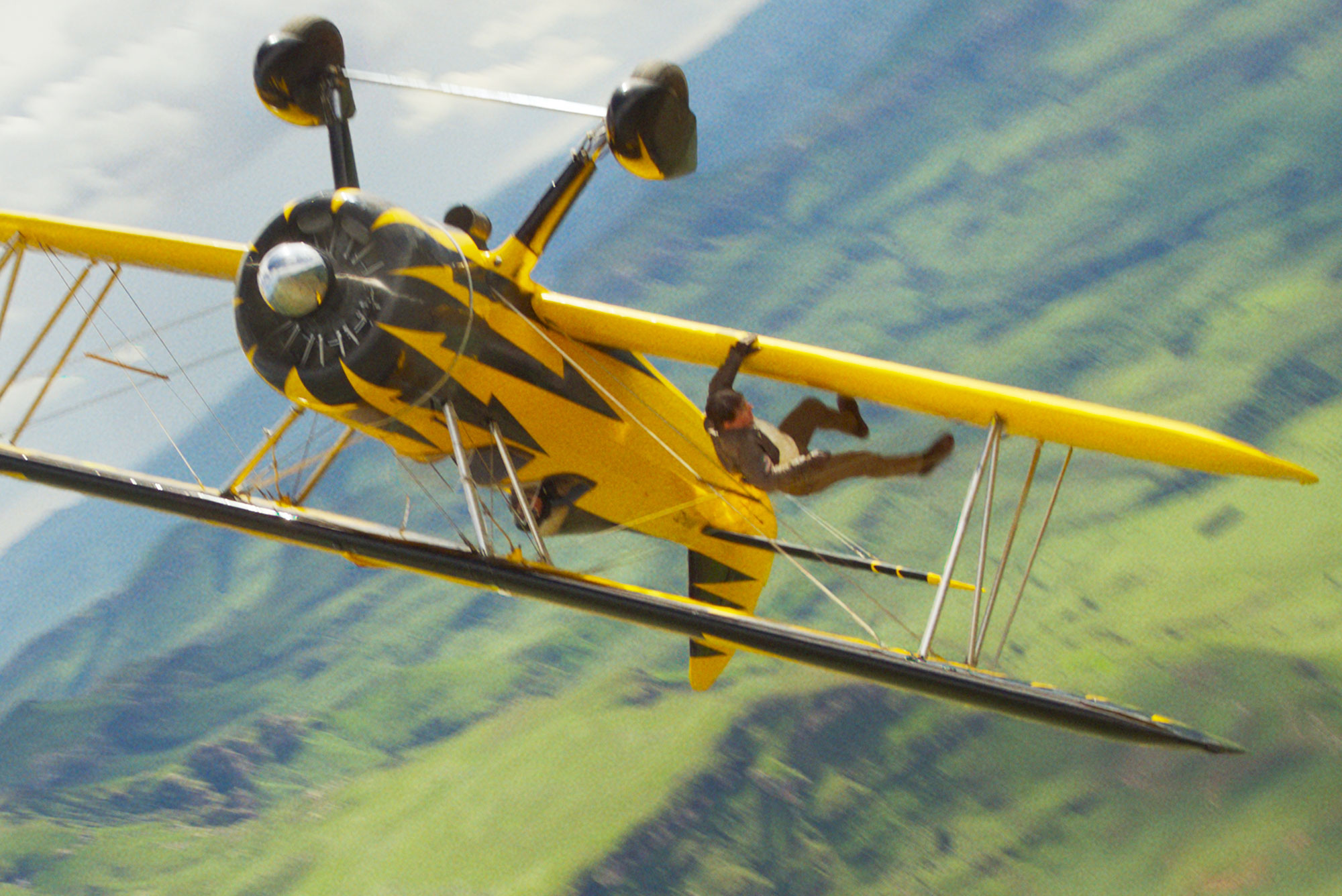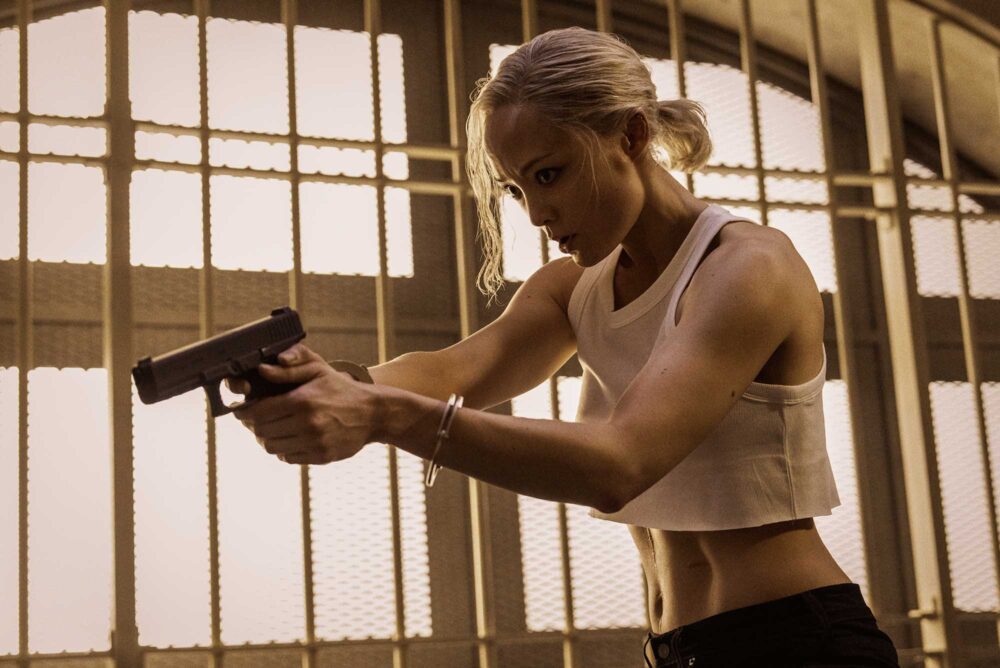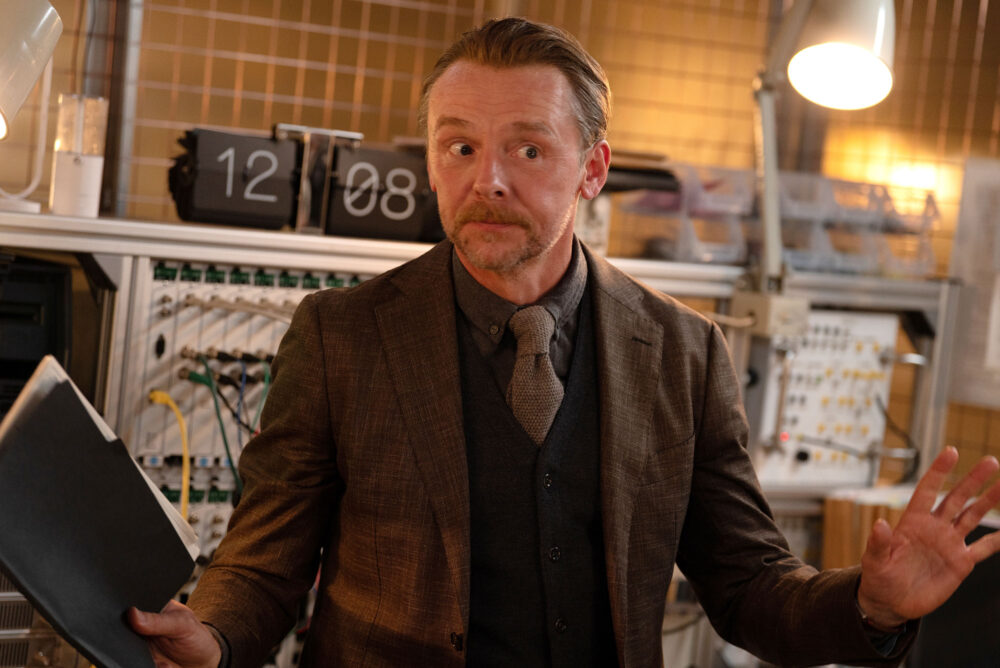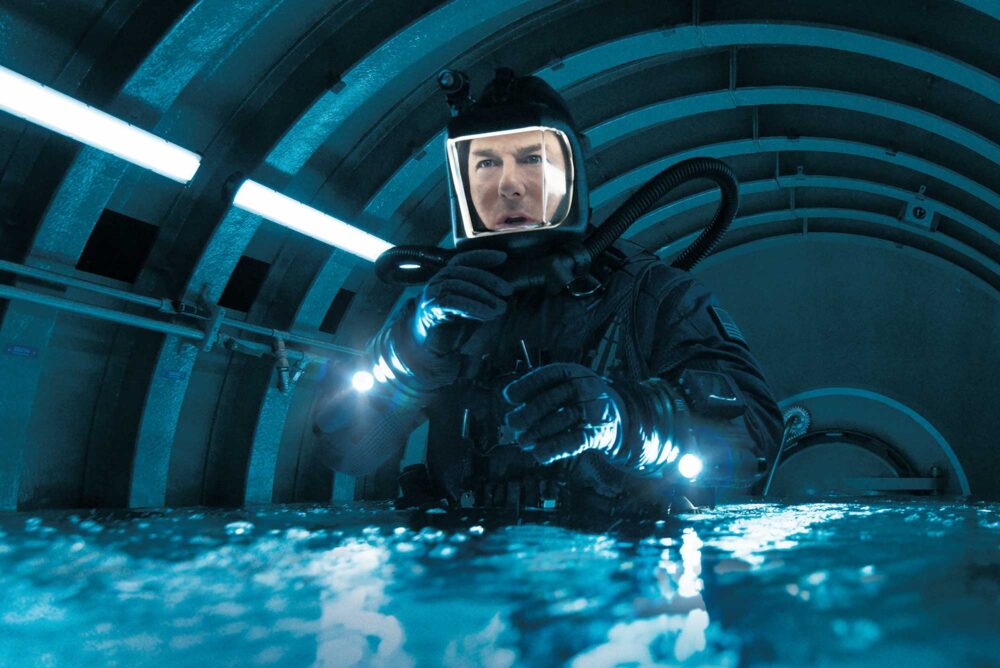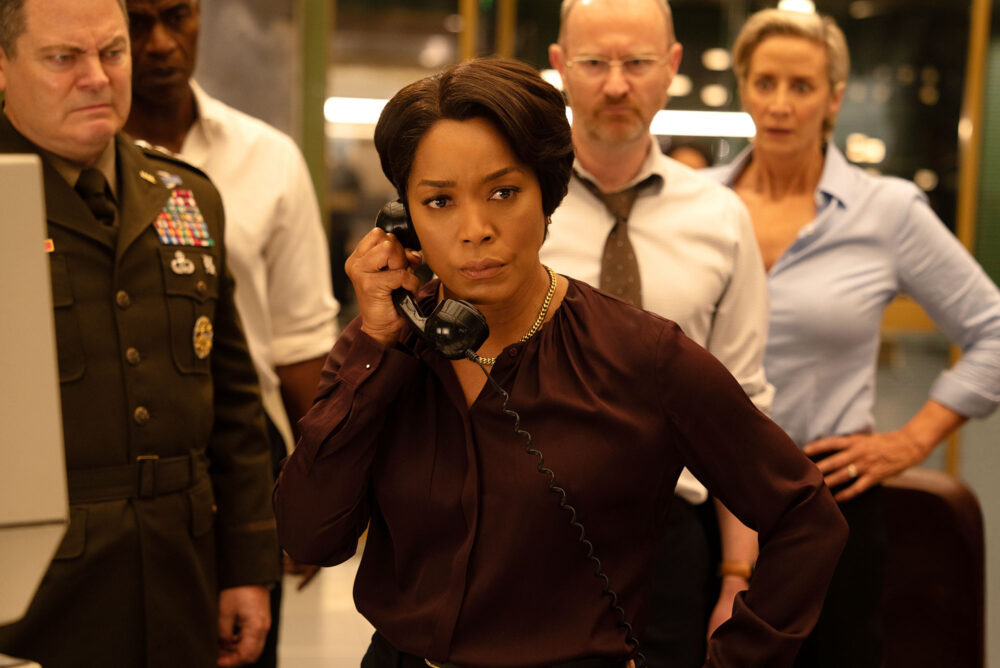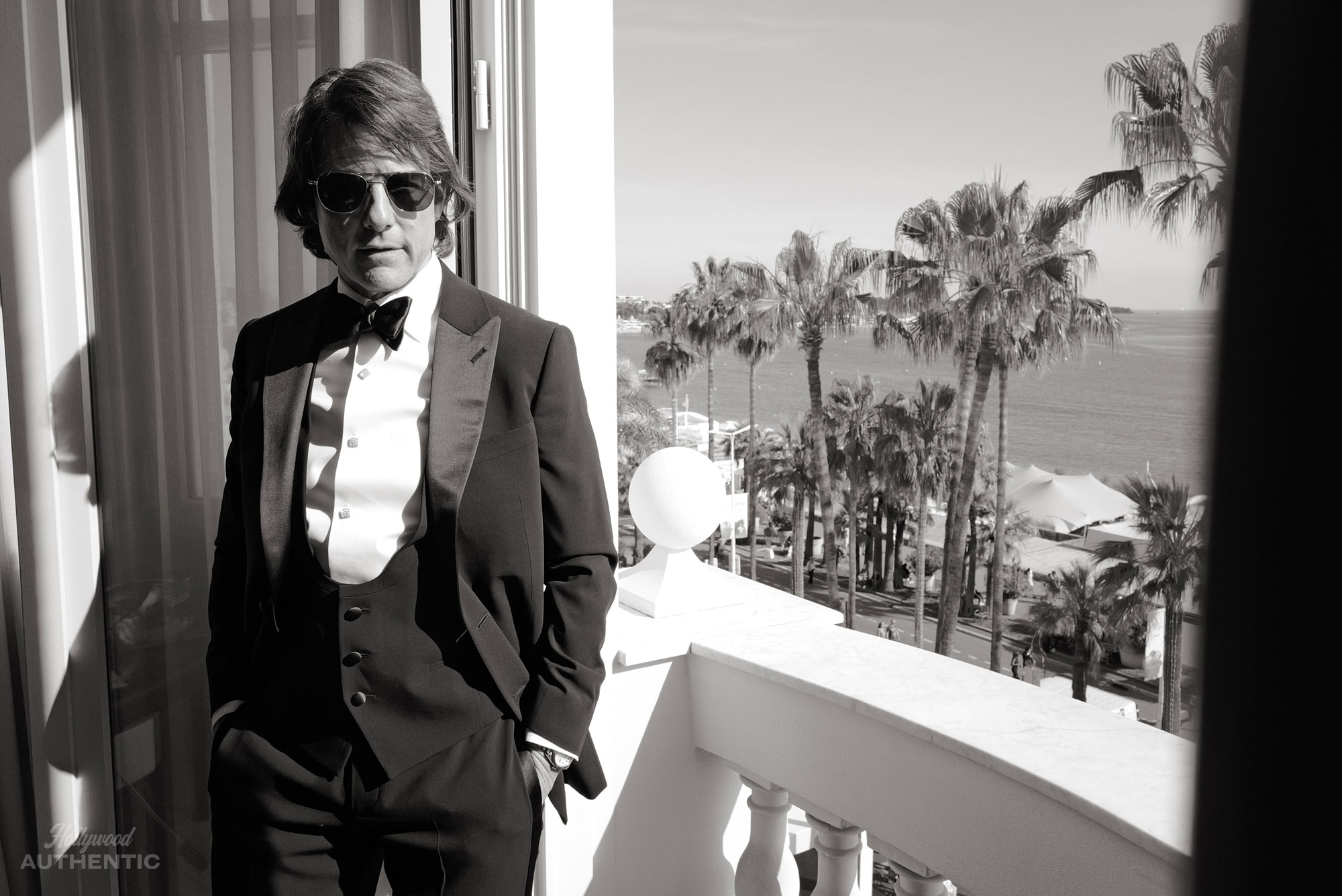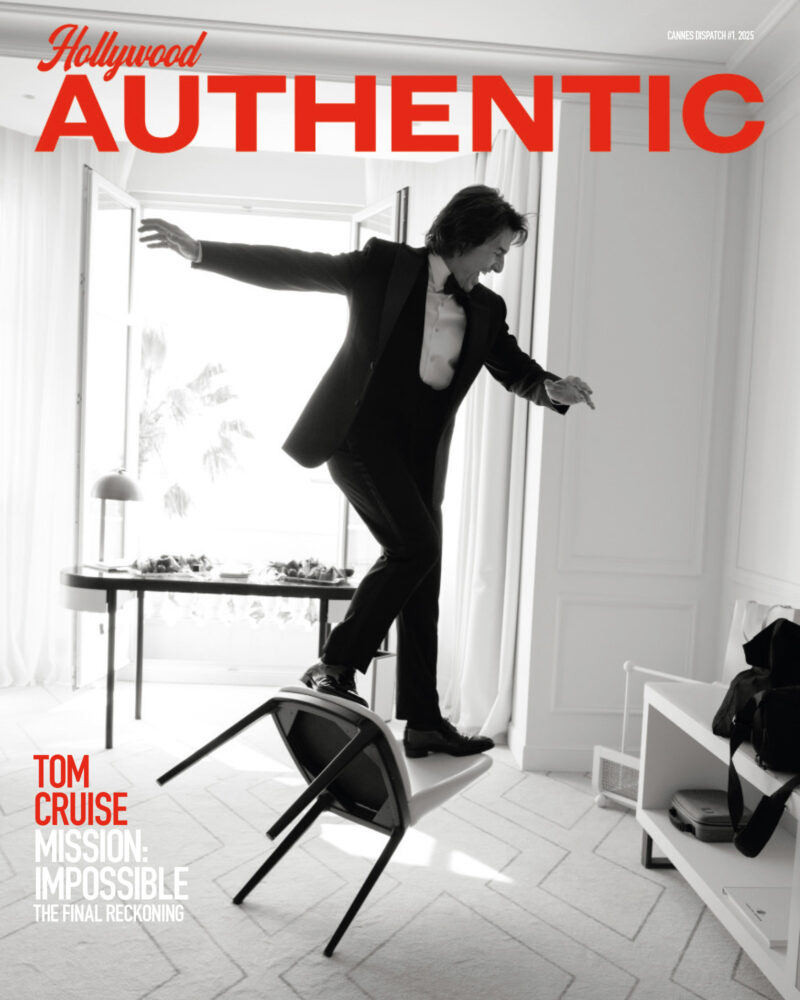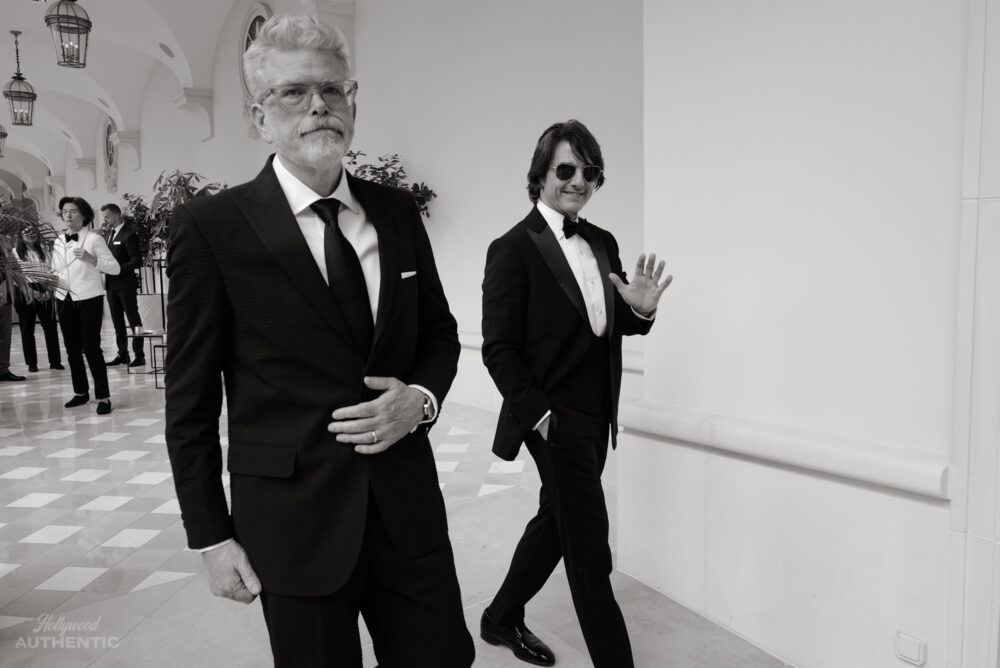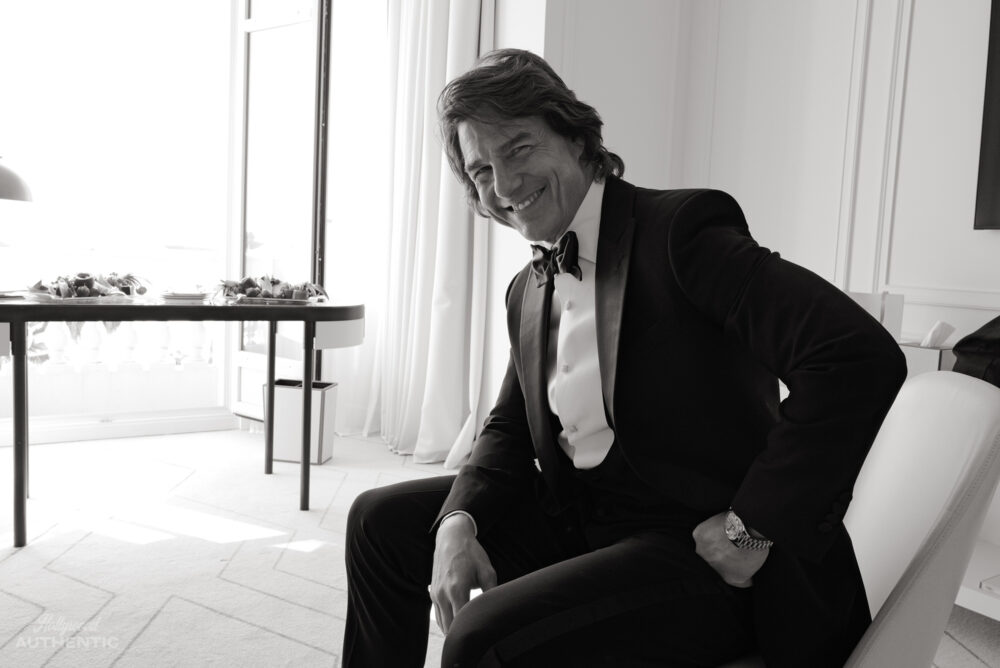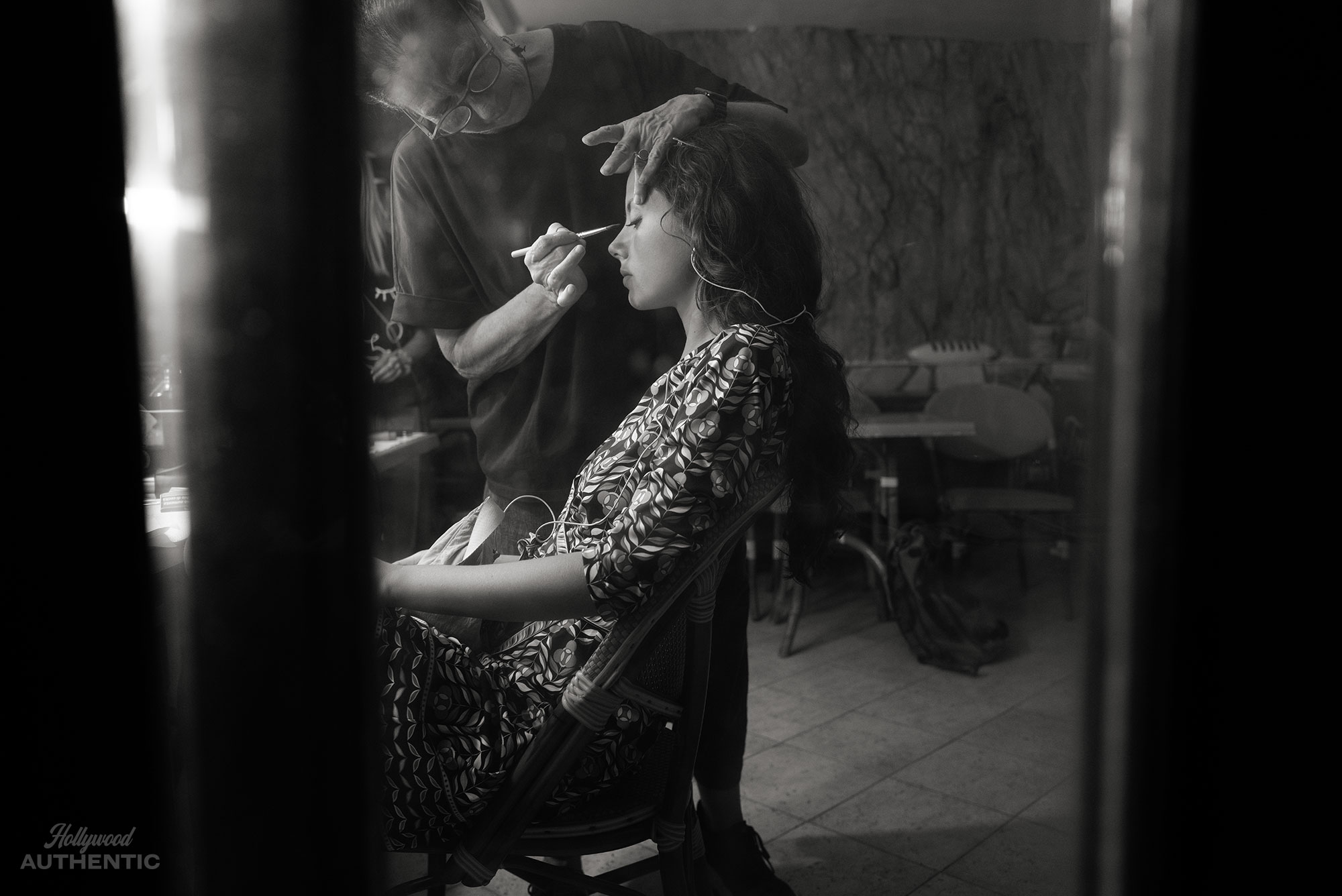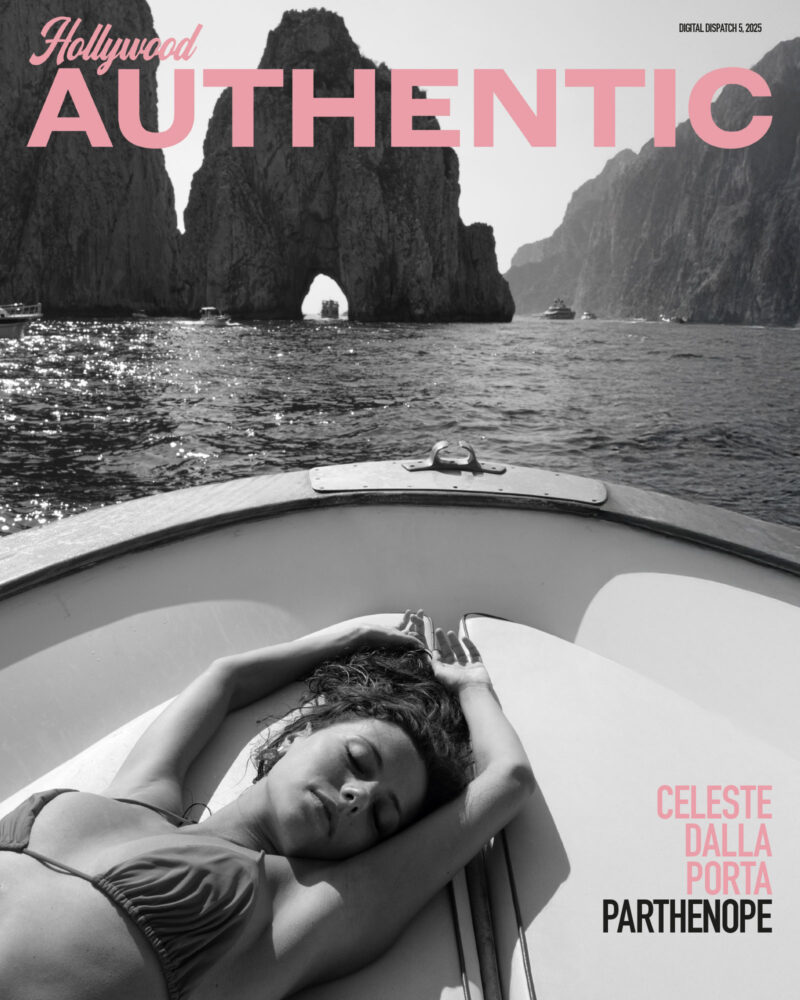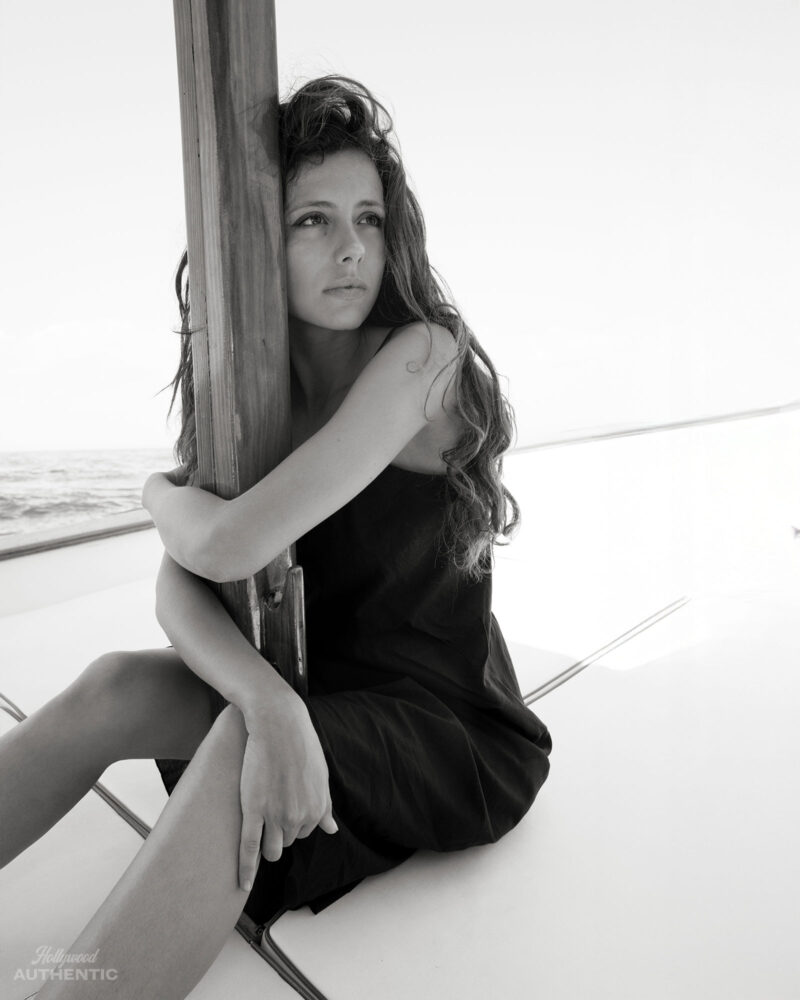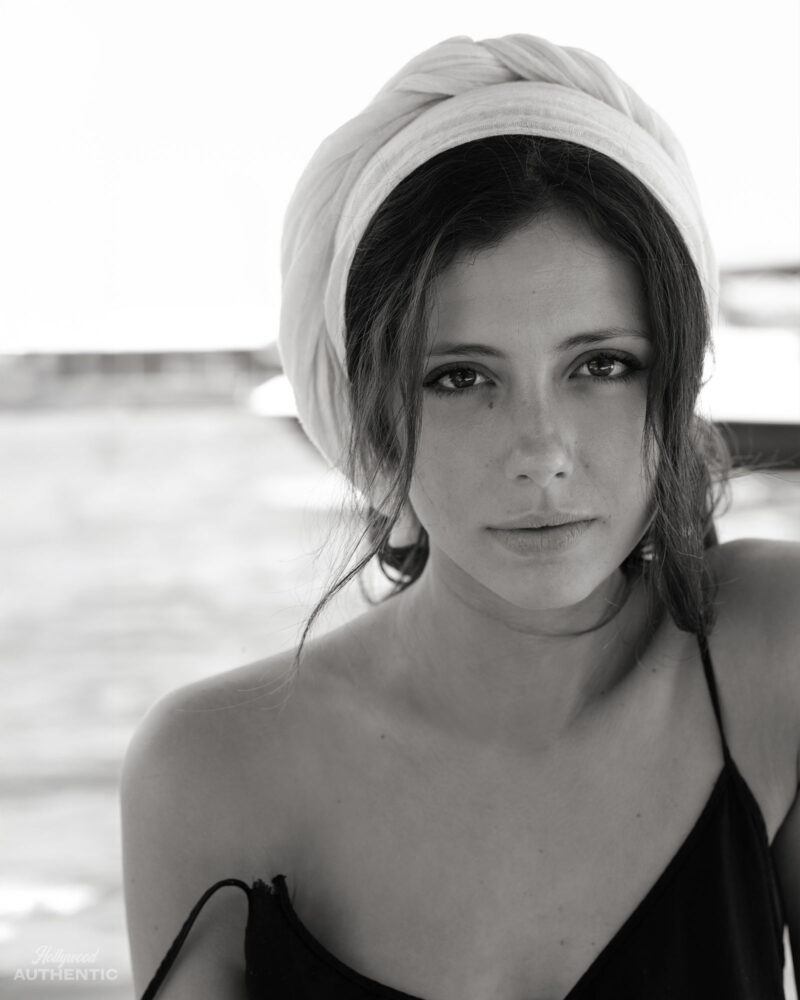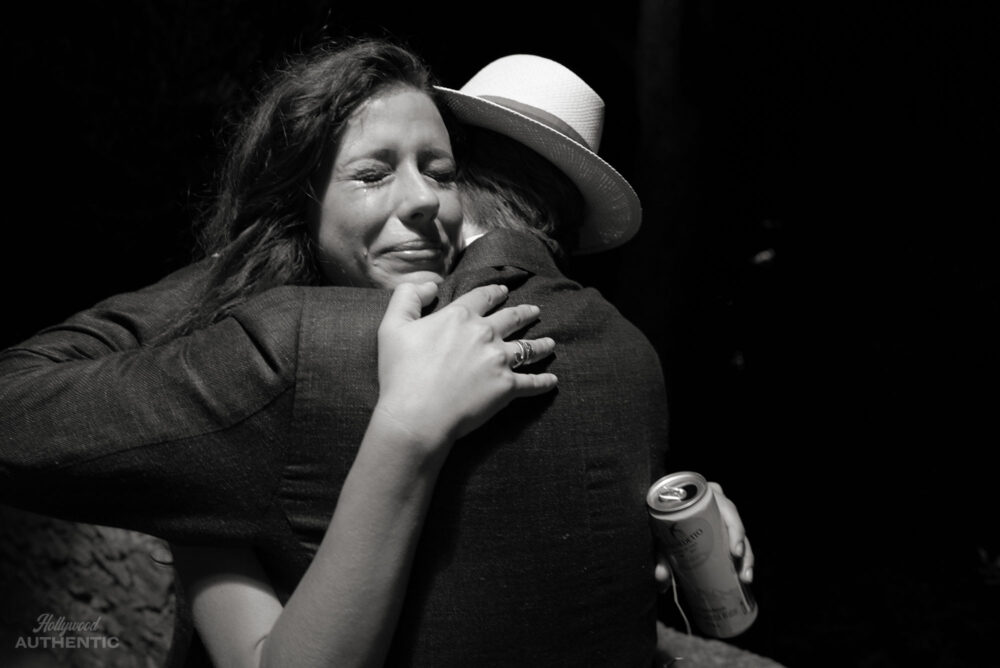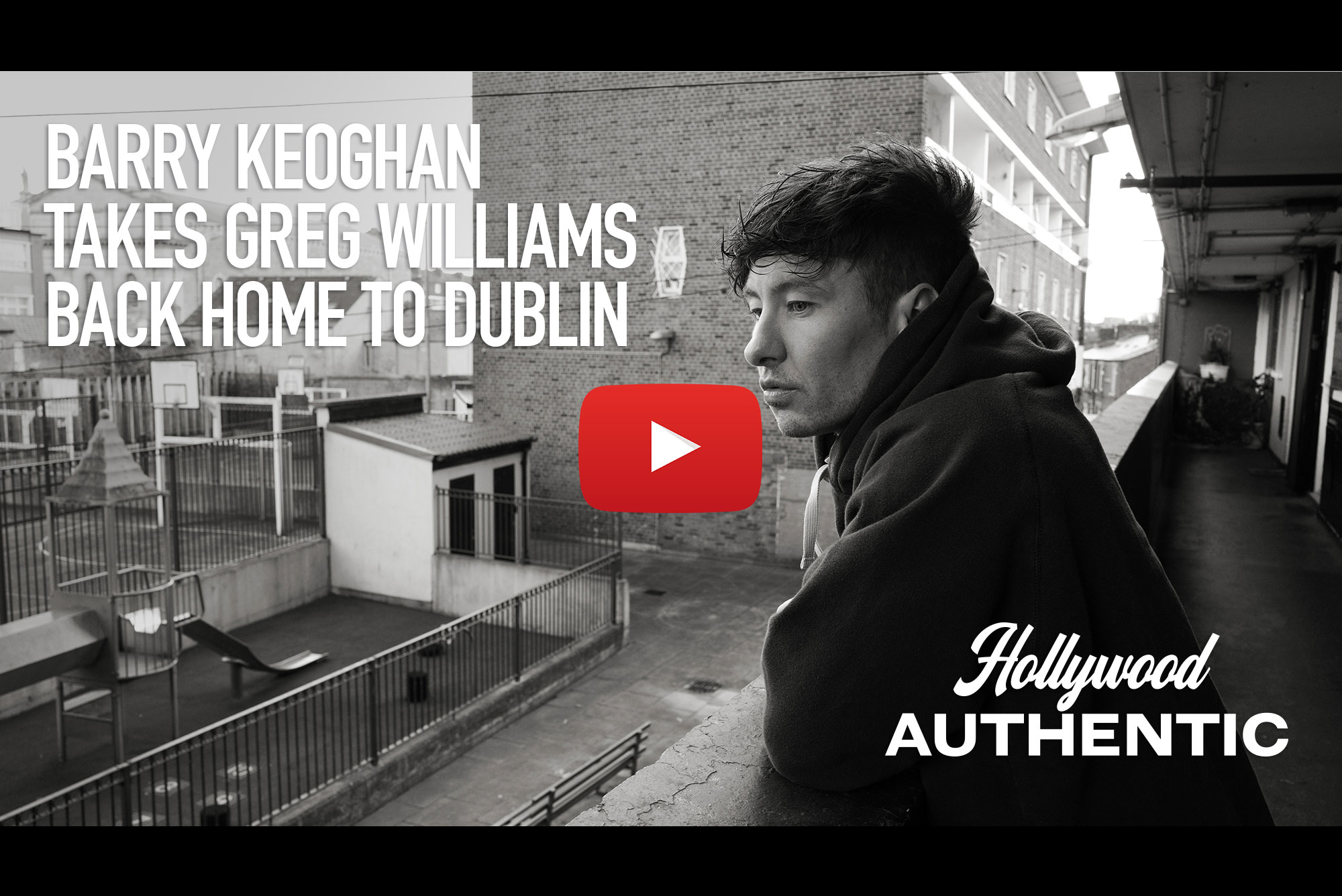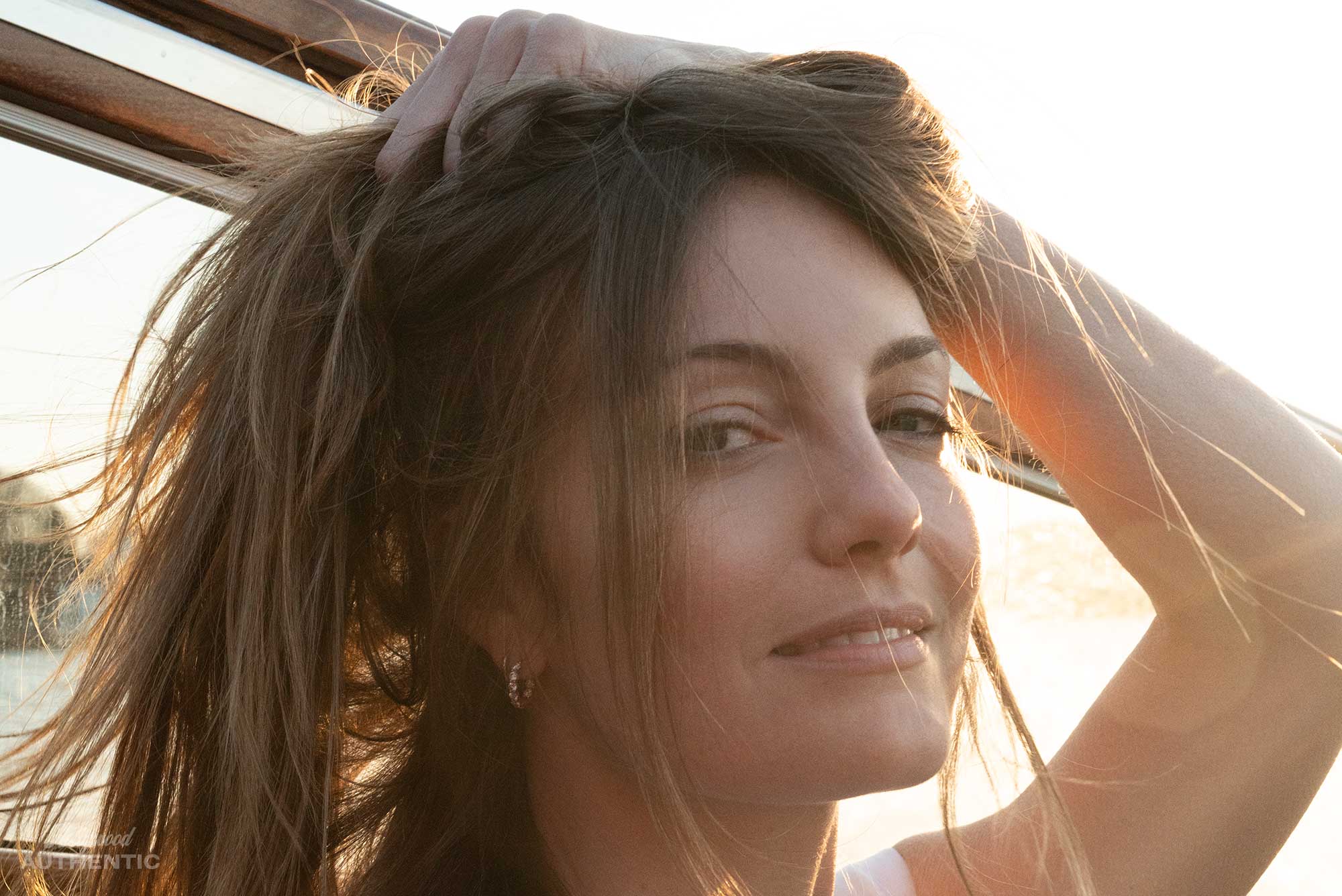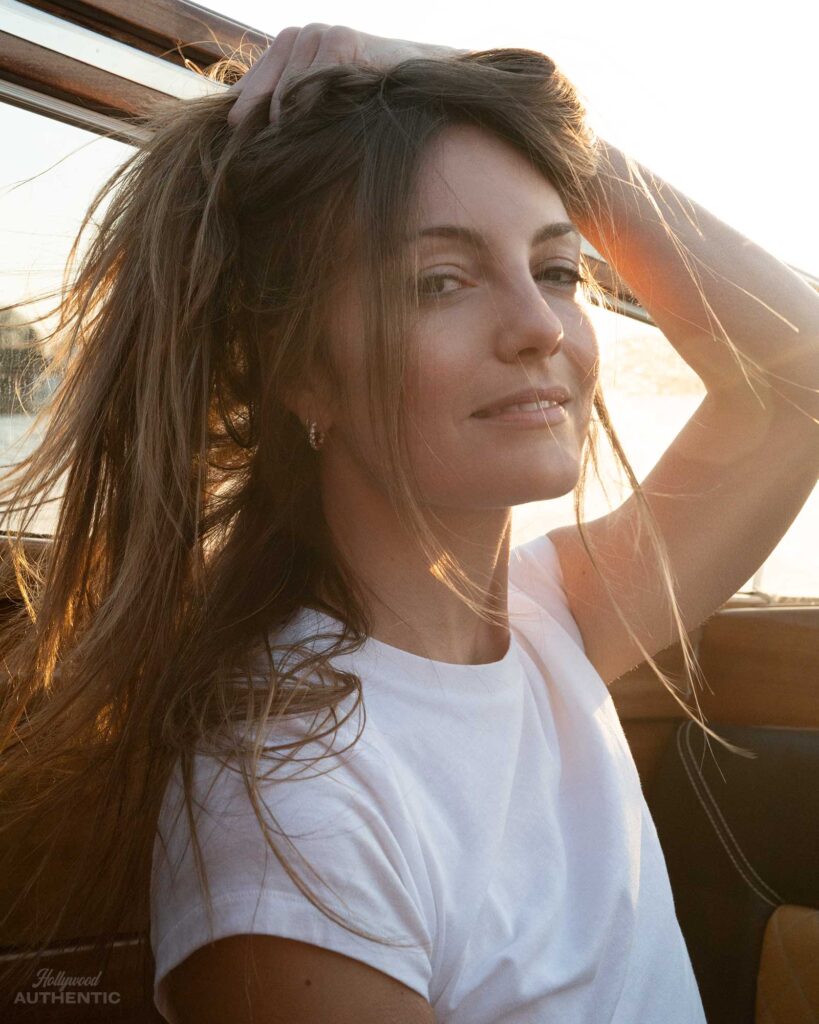
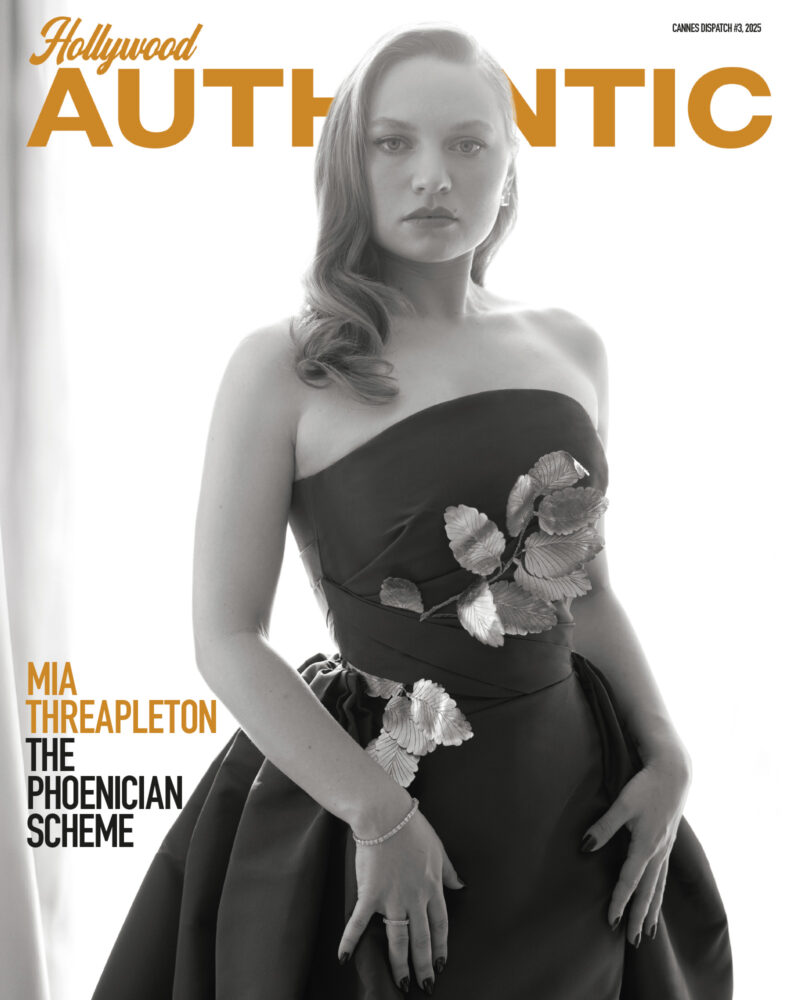
Photographs by GREG WILLIAMS
Words by JANE CROWTHER
The British actor who leads Wes Anderson’s latest ensemble tells Hollywood Authentic about landing her role in The Phoenician Scheme and experiencing her inaugural Cannes.
Attending the Cannes Film Festival for the first time is ‘adrenaline-pinching’ according to Mia Threapleton. ‘It does feel quite daunting, primarily because I’ve not done that many red carpet things ever, actually,’ she laughs. ‘But it is also incredibly exciting and amazing that that is where the film is going to be seen by so many people for the first time. That, for me, is the most exciting thing.’
Though she has been acting for a while – impressing in BAFTA winning I Am Ruth and last year’s The Buccaneers – Threapleton takes centre stage in Wes Anderson’s all-star latest where she plays Liesl, the pipe-smoking, sardonic, nun daughter of Benicio Del Toro’s business mogul. It promises to be a performance and project that skyrockets her. ‘It was actually a very intense auditioning process over about six months,’ she recalls of pursuing the role. ‘The first email I was sent was extremely scant. There was no information on the character. The only name as far as the character that I had to go off was ‘young girl’. I self-taped and several meetings down the line, I had a screen test, and met the wonderful Benicio del Toro. [Anderson] gave me a little bit of an explanation: ‘You haven’t seen your father for six years, and you’ve lived in a convent for the majority of the life that you can remember living. You have some very full-on, unanswered questions…’ And I found out 24 hours later that I had the job.’
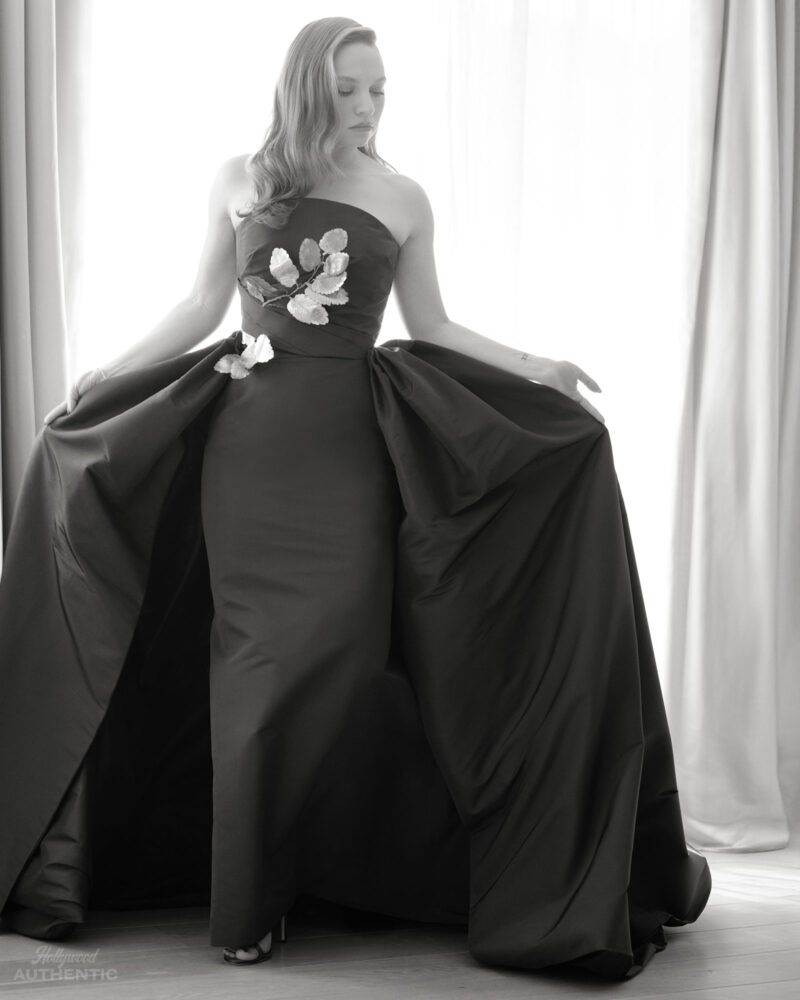
That job saw the 24 year-old joining a cast including many of Anderson’s repeat collaborators including Scarlett Johansson, Tom Hanks, Bill Murray, Benedict Cumberbatch, Jeffery Wright – and a steep learning curve in the director’s inimitable style. ‘He does have a very particular style. But, actually, when it comes to the acting, he really loves things to be as natural as possible. There’s lots of other opportunities within the scene to try a couple of different beats. So what you end up seeing is basically one of the many, many versions that we do. I think 20 takes was maybe our absolute lowest. On one of our first days, we did 69 takes.’ The experience was something she says she’s still getting her head around. ‘It just feels so surreal and equally amazing to have been able to have been a part of something like this with all the people – unbelievably talented people – cast, crew members, camera team, film team, props team, sound design, set design. I don’t think it really sunk in.’
Though Threapleton is the daughter of Kate Winslet, working with such a group of established actors must have provided plenty of useful instruction on how to navigate the precarious waters of acting. She laughs and recalls how she would observe her castmates in action to learn, even on her days off. ‘I would cycle into set and hide under tables, or Wes would point at a plant pot, and say, ‘Go hide over there. That’s a good place to hide today’. I remember having a really lovely conversation with Michael Cera, who plays Professor Bjorn. It was during a scene where we’re sat in a train car talking to each other, and then outside there’s everyone else playing basketball: Benicio, Brian [Cranston], Riz [Ahmed], Tom [Hanks]. I remember Michael turning to me and going, ‘This is so amazing. This is never going to happen again. This is crazy’. We just sat looking at each other, laughing; ‘What are we doing here? This is insane.’ It felt like summer camp every day.’
She recently saw the film ahead of its Cannes premiere and was amazed anew by the calibre of the cast and project. ‘The second that the opening credits rolled, I burst into tears. I couldn’t really believe what it was that I was seeing. There’s so much excitement, adrenaline and anticipation for seeing something like this, that everybody worked so hard on, and that you really care about. And it was so surreal watching this thing in front of me – ‘Oh God, that’s my face. That’s a lot of my face. Oh my God!’ It was overwhelming in the most amazing way possible.’

With a second series of The Buccaneers in the can, Threapleton is aware that Cannes will be a moment that could change her career and opportunities. So what projects is she looking for in the wake of her festival debut? ‘I don’t know if I really have a bucket list. What excites me so much about this job is the amount of incredible, creative people that are out there who want to tell really cool stories.’ Hollywood Authentic wonders how her perception of the industry has changed since her first experience of filming as a little girl on Alan Rickman’s A Little Chaos. ‘I don’t think it’s changed, and I don’t think it will change. I just feel like a little sponge with everything. Then I was just wanting to absorb all of it and I still do now. I like the fact that I still have so many things to learn.’
As a child who grew up with a working understanding of acting, has she ever been given advice that has helped her on her journey so far? ‘“Actually, I didn’t grow up with an understanding of acting necessarily. I really didn’t grow up on a film set at all. I can count on both hands the amount of times I went into work as a kid. But I think I was always just told, you know, ‘Do the work. Work hard on it, and concentrate’. I’ve tried to do that as best I can.’
The Phoenician Scheme premiered at the 78th Cannes Film Festival
Mia wears Oscar de la Renta


